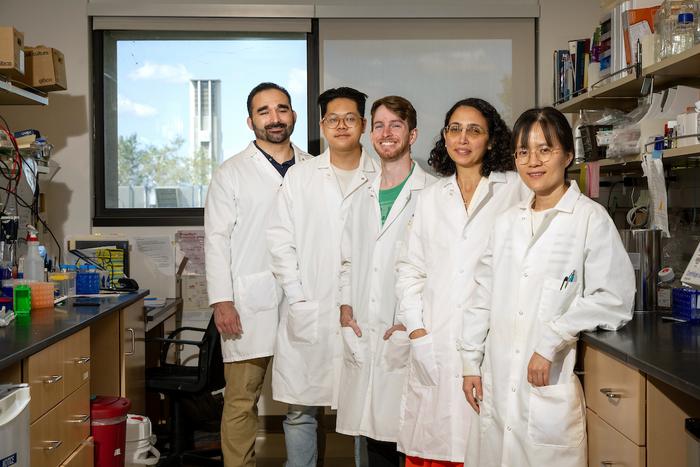
In a groundbreaking study from the University of California, Riverside, researchers have unveiled pivotal mechanisms by which adult stem cells preserve their regenerative identity. Published in the upcoming May 2025 issue of Genes & Development, this research highlights the indispensable role of histone chaperones—specialized proteins responsible for organizing chromatin architecture—in maintaining the delicate balance between stem cell renewal and differentiation.
Adult stem cells, residing in every organ, are uniquely tasked with sustaining tissue homeostasis by either self-renewing or differentiating into specialized cells. Despite their importance, the molecular underpinnings that govern their fate decisions have remained elusive. The University of California team approached this enigmatic question by investigating how histone chaperones influence chromatin structure to regulate gene expression programs crucial for stem cell identity.
Histone chaperones are multifaceted proteins that guide the assembly and disassembly of nucleosomes, the fundamental units of chromatin, particularly during DNA replication and transcriptional activity. Since chromatin configuration directly affects gene accessibility, these chaperones act as key modulators of cellular state. Using mouse hematopoietic stem cells as their model system—cells responsible for generating the entire spectrum of blood and immune cells—the researchers conducted a comprehensive screen of approximately 25 histone chaperones.
Among the candidates, two histone chaperones emerged as critical determinants of stem cell fate: CAF-1 (Chromatin Assembly Factor 1) and SPT6. CAF-1 primarily facilitates nucleosome assembly coupled to DNA replication, ensuring faithful genome duplication and epigenetic memory transmission. In contrast, SPT6 operates predominantly during transcription elongation, preserving chromatin integrity as genes are actively expressed. By selectively disrupting these chaperones, the researchers observed strikingly divergent effects on stem cell behavior.
Loss of CAF-1 led to a collapse of the cells’ self-renewal capacity, instigating a so-called “mixed cell state” in which stem cells simultaneously expressed markers of multiple differentiated lineages. This aberrant state reflects dysregulated chromatin packaging that permits inappropriate gene activation or silencing. Conversely, depletion of SPT6 triggered more precise differentiation pathways, pushing stem cells toward specific mature blood cell fates. The dual observations underscore how different histone chaperones sculpt distinct chromatin landscapes to enforce stem cell identity.
At the heart of this discovery lies the profound implication that manipulating histone chaperones could provide a novel avenue for directing stem cell behavior. Traditionally, stem cell therapies have focused on external factors such as growth factors or genetic modification. This study introduces epigenetic regulators as manipulable determinants of cell fate, leveraging the intrinsic chromatin-based machinery to generate desired cell types with greater precision.
The experimental framework employed by the team was multifaceted, encompassing advanced techniques such as single-cell RNA sequencing to deconvolute complex transcriptional changes following chaperone disruption. These analyses revealed comprehensive gene expression shifts correlating with chromatin remodeling events, offering a sophisticated molecular map of how nuclear architecture orchestrates cellular identity transitions. The investigators also utilized genetic manipulation tools refined by CRISPR technology to perturb specific chaperones in vivo with high specificity.
Leading this effort was Assistant Professor Sihem Cheloufi, whose longstanding fascination with cellular reprogramming stems from the seminal cloning of Dolly the sheep. Reflecting on the research, Cheloufi emphasized how cutting-edge tools like AI-driven sequencing analyses have propelled the field beyond static observations to dynamic interrogation of epigenetic states. “Histone chaperones reside at the nexus of development, aging, cancer, and regeneration, making them indispensable targets for emerging regenerative medicine paradigms,” she stated.
Postdoctoral fellow Reuben Franklin, a key contributor, highlighted the surprising specificity of these chaperones’ functions. “Despite their widespread cellular roles, manipulating CAF-1 or SPT6 induces highly selective stem cell outcomes,” he explained. This opens new frontiers for therapeutic strategies that aim to coax stem cells along precise differentiation trajectories, circumventing risks of aberrant cell behavior often observed in conventional stem cell transplantation.
Graduate student Brian Zhang also played a pivotal role, implementing single-cell technologies that unveiled the cellular heterogeneity underpinning the stem cells’ fate shifts. “Deciphering why cells behave the way they do is one of biology’s fundamental challenges,” Zhang noted. “Our findings illuminate the epigenetic levers that control stem cell programming, thereby accelerating the development of cell therapies for tissue regeneration and disease amelioration.”
Importantly, this study was supported by robust funding from prestigious institutions including the National Institute of General Medical Sciences and the California Institute of Regenerative Medicine. It also represents a collaborative triumph involving interdisciplinary teams spanning UCR, MIT, Massachusetts General Hospital, Cold Spring Harbor Laboratory, and Yonsei University. Such synergy underscores the complexity and translational potential of epigenetic stem cell research.
The paper, titled “Histone Chaperones Coupled to DNA Replication and Transcription Control Divergent Chromatin Elements to Maintain Cell Fate,” not only enriches our understanding of chromatin dynamics but strategically positions histone chaperones as therapeutic targets. Targeted epigenetic modulation could revolutionize regenerative medicine by harnessing the genome’s packaging machinery to steer stem cell destiny, potentially impacting treatments for degenerative diseases, cancers, and age-related tissue decline.
As the research community eagerly anticipates the formal journal release, the implications resonate throughout the biomedical landscape. This discovery integrates foundational epigenetic biology with cutting-edge biotechnology, challenging existing dogmas about cellular identity maintenance. With the ability to reshape chromatin landscapes now a tangible goal, personalized and precisely controlled stem cell therapies appear closer than ever before, heralding a new era in regenerative science.
Subject of Research: Cells
Article Title: Histone chaperones coupled to DNA replication and transcription control divergent chromatin elements to maintain cell fate
News Publication Date: 16-Apr-2025
Web References:
https://genesdev.cshlp.org/content/early/2025/04/16/gad.352316.124.abstract
References:
DOI: 10.1101/gad.352316.124
Image Credits:
Credit: Stan Lim, UC Riverside
Keywords:
Histone chaperones, adult stem cells, chromatin, cell fate, CAF-1, SPT6, epigenetic regulation, stem cell renewal, differentiation, hematopoietic stem cells, chromatin remodeling, regenerative medicine
Tags: adult stem cell regenerative identityadvancements in stem cell therapychromatin architecture in cell differentiationDNA organization mechanismsgene accessibility and chromatin structuregene expression regulation in stem cellshematopoietic stem cell researchhistone chaperones role in stem cellshistone proteins and nucleosome dynamicsmolecular mechanisms of stem cell fatetissue homeostasis and stem cellsUniversity of California Riverside stem cell study


